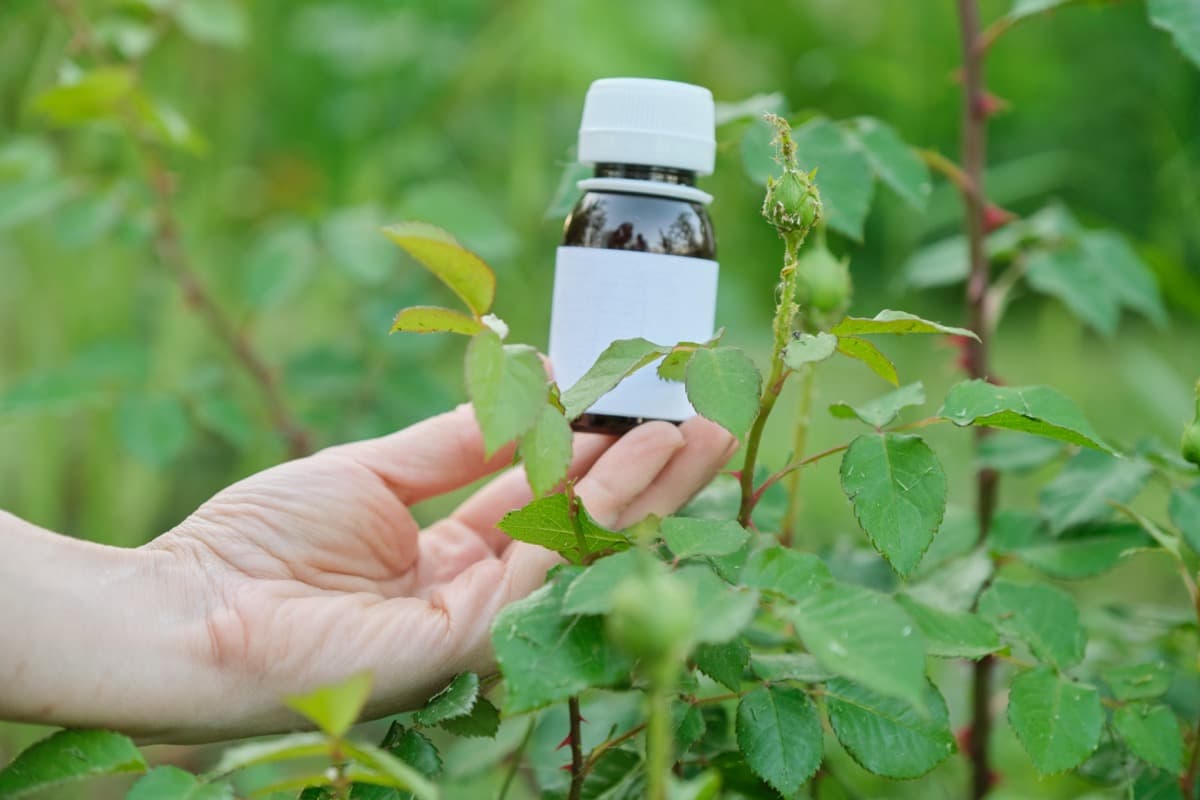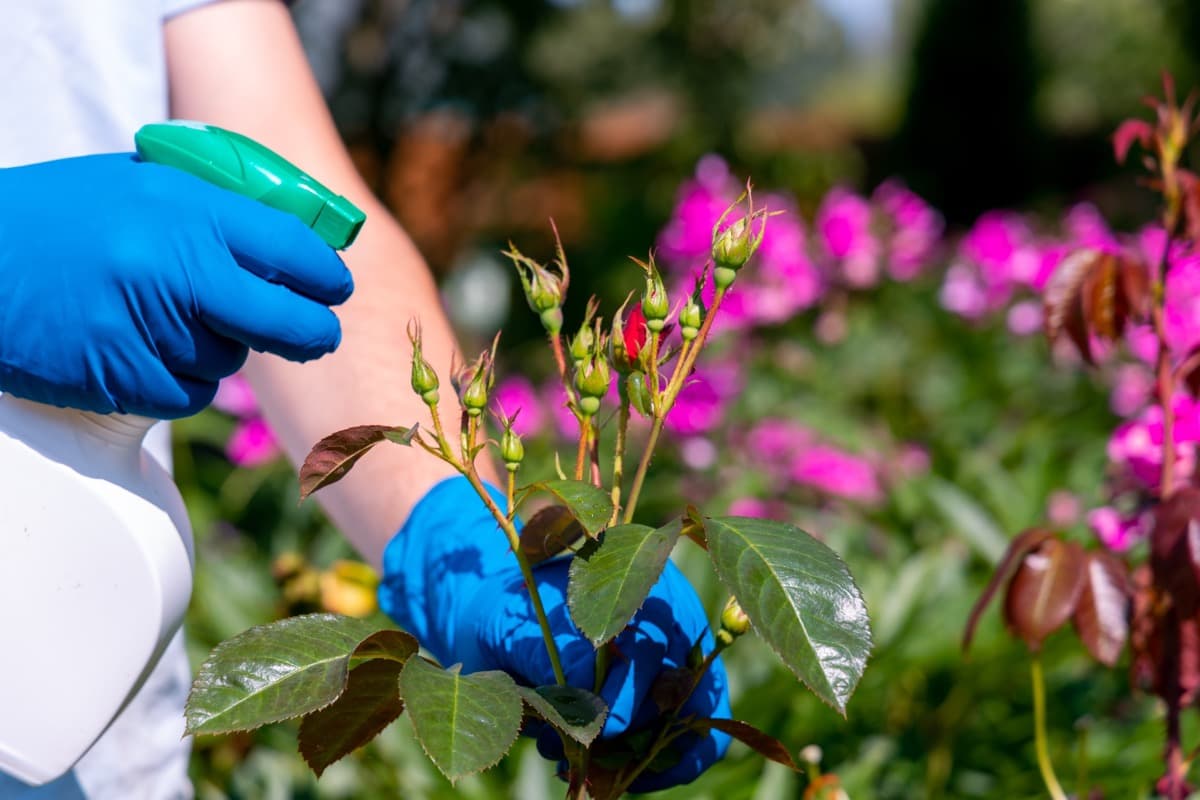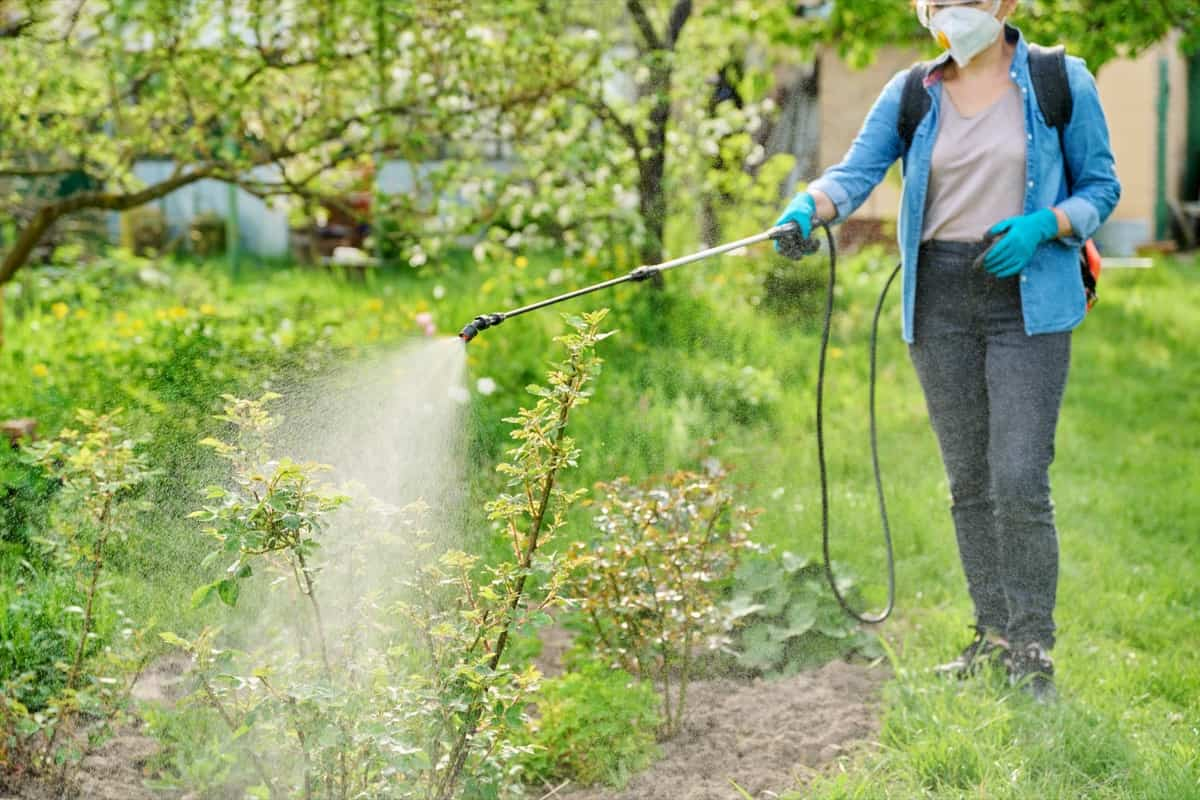Botrytis blight disease of rose, also called gray mold. It’s a fungal disease caused by Botrytis cinerea. This disease affects a wide variety of ornamental plants, including roses, and can cause significant damage to the plants. Botrytis cinerea is a necrotrophic fungus that obtains nutrients by killing and decomposing plant tissues.

Botrytis Blight Management in Rose
The causal organism of Botrytis blight Disease
The most common causal organism of Botrytis blight is Botrytis cinerea. In addition to these fungal pathogens, several factors, such as high humidity, cool and damp weather, poor air circulation, overcrowding of plants, and physical damage to plant tissues, can all contribute to the development and spread of Botrytis blight.
The Disease cycle of Botrytis blight Disease
The disease cycle of Botrytis blight, also known as gray mold, involves several stages that are influenced by the environment, such as temperature, humidity, and the presence of plant tissue.
- Spore production: The disease cycle begins when Botrytis produces spores easily disseminated by air currents and splashing water.
- Spore germination: When spores land on a suitable host plant, they require a film of moisture for 8 to 12 hours to germinate and infect the plant. Relative humidity of 85% or greater and temperatures between 55-75°F are optimal for spore germination.
- Infection: Once the spores have germinated, they penetrate the plant tissue and begin to colonize at a wide range of temperatures, with an optimum range of 60-75°F. The fungus can infect various plant parts, including leaves, stems, flowers, and fruits.
- Disease development: The fungus grows rapidly and produces a gray, fuzzy mycelium mass on infected plant tissue. The affected tissue becomes water-soaked, soft, and often has a water-soaked margin. Eventually, the infected tissue becomes necrotic and dies, leading to serious damage to the plant.
- Spore dispersal: The fungus produces new spores that can be disseminated by air currents or water splash, thus continuing the disease cycle.
Causes/Conditions favorable for Botrytis blight disease spread.
- Botrytis blight disease is favored by high humidity and moisture. It can be spread by air currents, splashing water, and physical contact with infected plant parts.
- Wounds in plant tissues provide entry points for the pathogen to invade and colonize the host. Botrytis blight is more in the spring and fall months when temperatures are cooler and relative humidity is high.
- The pathogen also produces infectious propagules such as sclerotia that can survive in the soil or plant debris for long periods, providing a source of inoculum for subsequent infections.
- Overcrowding plants and poor air circulation can create conditions conducive to spreading the disease, as can excessive nitrogen fertilization, which promotes rapid vegetative growth that can be more susceptible to infection.
- Botrytis blight can also be favored by plant stress caused by drought, heat, or insect damage, which can weaken the host plant and make it more vulnerable to infection.
Symptoms of Botrytis blight disease
Symptoms of Botrytis blight disease can vary depending on the plant species affected and the stage of infection. However, some common symptoms of the disease include:
- Grayish-brown fuzzy fungal growth on flowers, leaves, and stems.
- Small flecks on infected petals.
- Sunken, grayish-black spots (lesions) at the base of infected flowers and stems.
- Cane blight, characterized by dark, sunken lesions on the stems, is often associated with wounds where flowers have been cut or the plants have been pruned.
- Wilting, discoloration, and eventual death of infected plant tissues.
- On cuttings taken for propagation, the fungus may enter through cutting wounds and kill young twigs or the entire cutting.
In case you missed it: Downy Mildew Management in Rose: Symptoms, Disease Cycle, Treatment, Chemical, and Biological Control

Cultural control measures of Botrytis blight Disease
- Cultural practices can also reduce the incidence and severity of Botrytis blight.
- Proper sanitation measures, such as removing plant debris and infected plant material, can help reduce the number of inoculum sources.
- Proper pruning and spacing of plants can improve air circulation and reduce humidity, which creates less favorable conditions for disease development.
- Additionally, irrigation should be done to minimize leaf wetness, such as drip irrigation or watering early in the day.
Biological control measures of Botrytis blight Disease
- Biological control measures for Botrytis blight disease involve using natural enemies or biological agents to suppress the growth and spread of the pathogen.
- One effective biological control method uses bio fungicides containing antagonistic microorganisms such as Trichoderma harzianum. These fungi compete with Botrytis cinerea for nutrients and space, reducing the pathogen’s ability to colonize and infect the plant.
- Another approach is using plant extracts and essential oils with antifungal properties, such as neem oil and garlic extract, which have been shown to suppress the growth of Botrytis.
Chemical Control measures of Botrytis blight Disease
Chemical control measures for Botrytis blight typically involve the use of fungicides. These can be applied as foliar sprays, drenches, or dusts. It’s important to note that the effectiveness of chemical control measures can be limited due to the fungus’s ability to colonize host plants close to harvest time.
If early infections are detected, foliar sprays with fungicides containing chlorothalonil can effectively control the disease’s spread. Other fungicides based on active ingredients, such as fluazinam and thiophanate-methyl, can also be effective against Botrytis blight. It is important to rotate fungicides with different modes of action to avoid the development of resistance.
Preventive measures for control of Botrytis blight Disease
- Use healthy planting material from certified sources to avoid the introduction of the pathogen into the field.
- Plant-resistant or tolerant varieties of crops can help reduce disease incidence.
- Plant early or early-maturing varieties to avoid flowering and fruiting during periods of high humidity.
- Keep a reasonable distance between the plants to provide good air circulation and reduce humidity.
- Ensure a good row orientation and upright plants to allow for good sunlight penetration and quick drying of the leaves.
- Use mulch to impair the life cycle of the fungus and reduce the inoculum.
- Practice good drainage of the location and avoid inappropriate irrigation to prevent moisture accumulation.
- Monitor the field and remove the decaying plant tissues to prevent the spread of the disease.
- Take great care not to injure the plants when working in the field, as injuries can serve as entry points for the pathogen.
In case you missed it: Blackspot Management in Rose: Symptoms, Treatment, Chemical, Biological, Natural, and Organic Control

Conclusion
It is most commonly found in cool and humid environments, and air currents and splashing water can easily spread its spores. The disease can affect all parts of the plant, including the flowers, stems, leaves, and roots, and can lead to a range of symptoms, including wilting, browning, and the development of grayish-brown fungal growth. Effective control of Botrytis blight disease of rose requires a combination of preventive measures, cultural practices, and chemical or biological control measures.
- Beneficial Insects in Pest Management
- Natural Solutions for Pest Control in Flower Gardens
- Types of Fungicides Used in Agriculture
- Common Issues in the Fruit Development Stage of Pomegranate Farming
- Fruit Development Issues in Papaya: Easy Solutions and Treatment
- Soil-Borne Diseases and How to Protect Your Plants
- Practices to Prevent Disease Spread in the Garden
- From Wilted to Thriving: How to Treat Root Rot Naturally in Houseplants
- Natural Remedies to Cure Brown Spots on Fig Tree Leaves